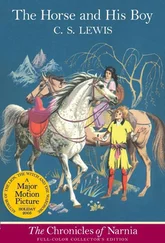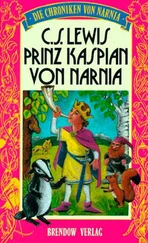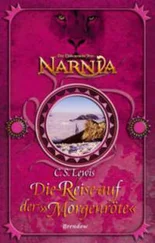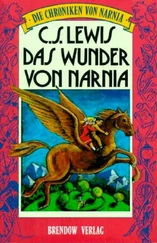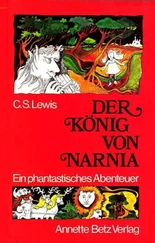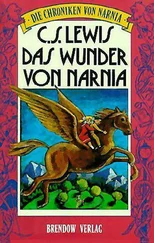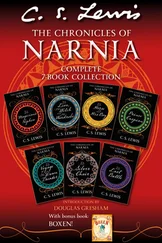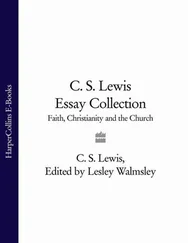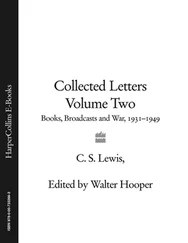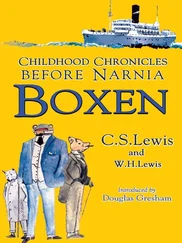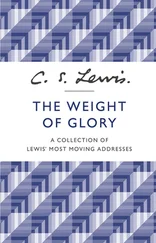I returned to work in the autumn from a year’s academic leave: which was not as attractive as it sounds, for it was granted me for the express purpose of finishing a considerable literary task, and my nose was kept pretty close to the grindstone. But my brother and I managed to get the best part of a month’s real holiday in Eire, ‘on the other side of the iron curtain’ as we call it, and came back much the better for it.
It is I’m afraid too late to wish you a happy Christmas but I do send you my very best wishes for a happy and prosperous 1953.
With many thanks,
yours sincerely,
C. S. Lewis
TO WILLIAM L. KINTER(BOD): TS
REF.52/519.
Magdalen College,
Oxford.
23rd December 1952.
Dear Mr. Kinter,
Thanks for your kind card. I am so glad you liked The Dawn Treader . Who am I to say whether Grace works in my own stories? One can only be sure on a much humbler level, that if anything is well done, we must say Non nobís. 307
All good wishes.
Yours sincerely,
C. S. Lewis
TO GEORGE SAYER(W):
Coll. Magd.
Dec 23rd 1952
Dear George and Moira
Happy Christmas! I hope what I have to say will not make it happier , though. I’m booked to visit your enchanted house on Jan 1st. But it’s all No Go. We have a visitor (U.S.A.) who will last till then 308 and beyond her looms a fellowship examination.
The whole Vac. is in fact a shambles. Perpetual conversation is a most exhausting thing. I begin to wonder if I have a vocation for La Trappe. I am sick at these numbers. But I love you both: it is one of my most frequent and tonic activities. Blessings upon you.
Yours
(what is left of) Jack
TO VERA GEBBERT (W): TS52/103.
Magdalen College,
Oxford.
26th December 1952.
My dear Mrs. Gebbert,
Many thanks. Doubtless a reproduction of a fresco of the early Middle Ages from a Narnian catacomb?
With all blessings to you both for the New Year,
yours sincerely,
C. S. Lewis
TO BONAMY DOBRÉE (W): 309 PC
Magdalen College,
Oxford.
Dec. 30/52
No, no. The context and, a literal translation, will put Wanderer 12 in a different light: ‘There is now no one alive to whom I dare clearly declare my mind: I know for a truth that it is an excellent quality in a man that he should firmly bind in what his heart contains—let him think what he pleases.’ 310
The poet is not talking about tears at all but about keeping one’s own counsel, holding one’s tongue among strangers. Also I think ‘the high brow’ a mistranslation. Earl means that in prose, but in verse is the heroic word for Man (ANMP). 311 All good wishes.
C.S.L.
1Winston Churchill was re-elected Prime Minister in 1951, and on 5 January 1952 he went to Washington, DC, to renew Britain’s ‘special relationship’ with the United States.
2Clement Attlee (1883-1967) was the Labour Prime Minster, 1945-51.
3‘Maleldil’ is the ‘Old Solar’ name given in Lewis’s interplanetary novels to God the Son.
4Pitter had been trying since 1949 to transcribe a passage from Lewis’s Perelandra into Spenserian stanzas. She said in a note to Lewis’s letter of 17 November 1949 (CL II, p. 997): ‘The passage…was to have been included in one of my books, but I think John Hayward…finally decided that (copy-right trouble, apart) it didn’t do anything that the original hadn’t done a lot better’ (Bodleian Library, MS. Eng. lett. c. 220/3, fol. 84).
5He was referring to the poem ‘The Earwig’s Complaint’ in Pitter’s A Mad Lady’s Garland (1934). Pitter said of this poem: ‘The earwig is imagined as a sort of little fiery Elizabethan soldier of fortune—he gets by chance into a lady’s bed, is much struck by her beauty, has the misfortune to tickle, and of course she throws him out—he laments the episode in what I thought a fine heroic tragical strain, but reflects finally that he has wings, after all, she not! It is an image, I suppose, of the scruffy neglected poet, a failure too in love, consoling himself (MS. Eng. lett. c. 220/3, fol. 107).
6i.e., the poet George Herbert (1593-1633).
7The Flying Enterprise was a 6,711-ton cargo ship. Built during the Second World War, it became a commercial cargo vessel after the war. On Christmas Day 1951 it left England and headed into the Atlantic Ocean on route for the United States through a turbulent sea. By the next day the Atlantic was hit by one of the worst storms in history, winds rising to hurricane force. On the bridge was Captain Henrik Kurt Carlsen, a Dane of extraordinary courage who remained aboard his ship for almost two weeks as efforts were made to tow her to port. He was finally forced to abandon ship when her list increased to a fatal degree on 10 January 1952, only about 40 miles away from Falmouth, England. The ordeal of the Flying Enterprise and Captain Carlsen was worldwide news at the time and remains one of the great stories of endurance and courage at sea. See Gordon Holman, Carlsen of the Flying Enterprise (London: Hodder & Stoughton, 1952). On 22 June 2001 a team of divers discovered the lost ship resting on her side in a depth of 280 feet on the seabed of the western approaches to the English Channel.
8p.p.
9Sister Penelope’s imagination had been fired by an article in The Times (6 December 1951), p. 5, entitled ‘A Mystery of Everest: Footprints of the “Abominable Snowman” ‘. The British mountaineer Eric Shipton wrote about a discovery his team made on Mount Everest on 8 November 1951: ‘At 4 o’clock we came upon some strange tracks in the snow. [Our guide] immediately announced them to be the tracks of “yetis” or “Abominable Snowmen”…The tracks were mostly distorted by melting into oval impressions, slightly longer and a good deal broader than those made by our large mountain boots. But here and there, where the snow covering the ice was thin, we came upon a well preserved impression of the creature’s foot. It showed three broad “toes” and a broad “thumb” to the side. What was particularly interesting was that where the tracks crossed a crevice one could see quite clearly where the creature had jumped and used its toes to secure purchase on the snow on the other side.’ The first reliable report of the Yeti appeared in 1925 but the best tracks ever seen were photographed by Shipton and published in The Times (7 December 1951), p. 13.
10Genesis 6:1-4: ‘And it came to pass, when men began to multiply on the face of the earth, and daughters were born unto them, That the sons of God saw the daughters of men that they were fair: and they took them wives of all which they chose. And the Lord said, My spirit shall not always strive with man, for that he also is flesh: yet his days shall be an hundred and twenty years. There were giants in the earth in those days; and also after that, when the sons of God came in unto the daughters of men, and they bare children to them, the same became mighty men which were of old, men of renown.’
11Cf. Psalm 45:11.
12He means the confusion between the Latin homo , ‘human being’, and vir , ‘(adult male) man’.
13Austin Farrer, The Glass of Vision , The Bampton Lectures for 1948 (1948).
14See CL II, p. 961.
15Simone Weil, Waiting on God , trans. Emma Craufurd (London: Routledge and Kegan Paul, 1951).
16‘A Religious of CSMV (Sister Penelope), They Shall Be My People: The Bible Traversed in a Course of Reading Plays, 2 vols. (London: Oxford University Press, 1951).
17I. O. Evans, Led By the Star: A Christmas Play (London: Rylee, 1952).
Читать дальше

